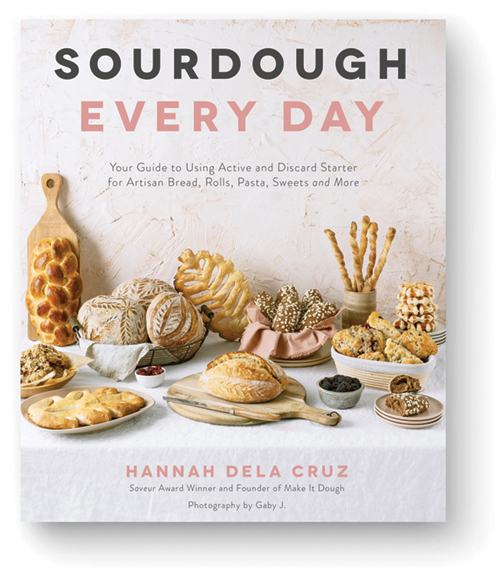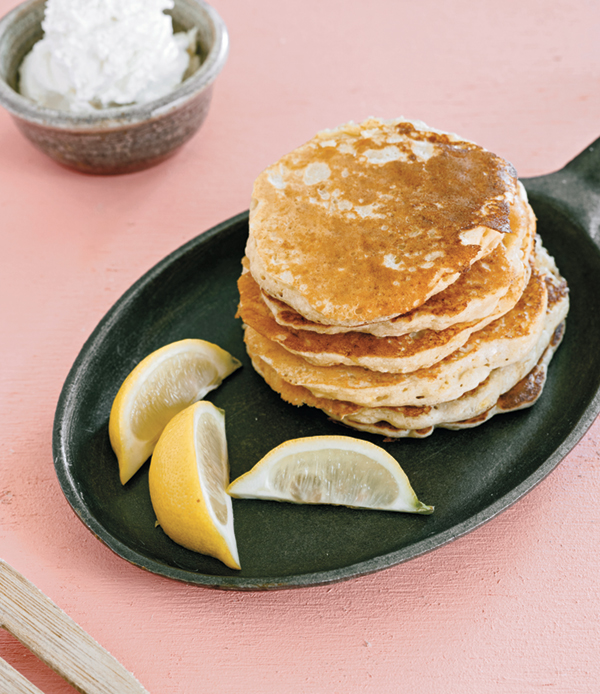
You’ve fed your sourdough starter. Now what?
Hannah Dela Cruz C’12 first encountered the term sourdough when she was 13, the year her family immigrated to the US from the Philippines. But it wasn’t until 2018, having burned out of a job in public relations, that she began playing around with a starter of her own. As she ran up against other unfamiliar terms—autolyse, lame—she launched a blog to work through her confusion and document her progress. By the time the pandemic emptied baker’s yeast from supermarket shelves, she’d climbed Mount Mother Culture just as a million suddenly homebound amateurs started mixing flour and water.
Traffic to her Saveur Blog Award–winning MakeItDough.com tripled during the spring lockdown, setting off a chain reaction that led to the December publication of Sourdough Every Day: Your Guide to Using Active and Discard Starter for Artisan Bread, Rolls, Pasta, Sweets, and More (Page Street Publishing, 176 pages, $21.99).
The cookbook aisles groan with sourdough titles—Amazon lists more than 700—but Dela Cruz has managed the rare feat of adding something genuinely fresh and useful to an overloaded category: no other cookbook, in the awareness of this sourdough-tending reviewer, explicitly focuses on uses for the discard that is part and parcel of starter maintenance. (The yeast in a starter culture require regular feeding, which is done by discarding a portion of the starter and replacing it with flour and water.) These discard recipes are what distinguish Dela Cruz’s first cookbook.

My favorites were for pastas. Sourdough discard imparts a subtle or distinct tang (depending on how long it rests in the fridge) to fettuccine-cut egg noodles—a flavor element that proved an especially welcome foil to the slightly sweet beet-and-goat-cheese ravioli I make for Christmas dinner. Recipes for ramen noodles, gyoza wrappers, and pierogis apply the same principle. Elsewhere, Dela Cruz gives the discard treatment to recipes running a multiculti gamut from paratha-style scallion pancakes to focaccia di Recco, rosewater-cardamom-pistachio biscotti to traditional zucchini bread, and Liège waffles to Moroccan-inflected chicken empanadas. There is much to try.
The author’s fresh memory of her own amateur days is also apparent in the more traditional sections devoted to active starter. To take one example, her advice to rub proofing-basket cloths with rice flour—whose lack of gluten minimizes sticking—made me wonder why on earth the New York Times’ otherwise excellent sourdough bread recipe advocates a 50-50 blend of rice and wheat flour.
So for adventurous beginners looking for an approachable guide to sourdough basics, or home bakers who’ve spent the pandemic wondering what to do with all that discard, this is a worthy addition to the kitchen shelf. —TP





I thoroughly enjoyed this feature and, as an avid bread baker, am eager to read and bake from Hannah Dela Cruz’s new book. I wonder how many Penn alumni have written cookbooks. Reem Kassis is another graduate who has published a cookbook with a second one on the way later in 2021.